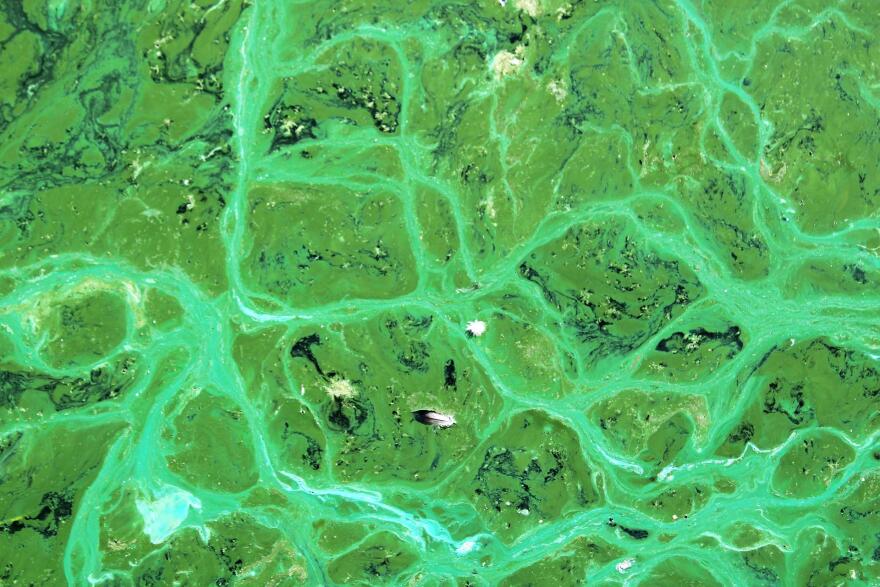Potentially toxic blue green algae blooms were spotted on Mole Lake in Forest County last week. Another bloom was spotted at the Sunday Lake campground beach in Wakefield over the weekend.
Late summer is a common time for these blooms to appear, but as the climate changes, blue green algae blooms are becoming more common, even on lakes scientists wouldn’t have predicted.
“Blue green algae are actually a form of bacteria. They usually live in moist or wet environments like lakes, and sometimes they grow a soil crust in other places,” says Emily Stanley, a University of Wisconsin – Madison professor who studies lake ecosystems. “They’re certainly very famous for growing in large populations that give us concern when they have these thick mats or green colors to lakes that we call blooms.”
Blooms are concerning because some types of blue green algae, or cyanobacteria, produce toxins which can be extremely harmful – even deadly – to people and pets.
In the past, blue green algae blooms were mostly found in nutrient-rich lakes, which are more common in southern parts of the state.
But lately that’s changing.
“There have been a lot of reports in the last few years of these cyanobacterial blooms happening in places where we as lake scientists wouldn’t predict them,” Stanley says. “These are cooler lakes, lakes that are less nutrient rich that have not historically had cyanobacterial blooms."
Last summer, for example, Lake Superior had half a dozen blue green algae blooms. A decade ago, that was unheard of.
There are several hypotheses about why this is happening.
“One of them is, of course, the water is warmer,” Stanley says. “It’s sufficiently warm to let these cyanobacteria get established.”
But that’s not the only factor.
More big rain events have pushed more nutrients into lakes, which help blue green algae flourish.
Additionally, the introduction of invasive species can disrupt a lake’s food web, sometimes reducing the capacity of zooplankton and organisms that eat the algae.
Stanley says research into what is causing increased blue green algae blooms is ongoing – and that’s not just because they stop people from swimming.
Blue green algae blooms can disrupt lake ecosystems, with consequences that ripple from plankton to fish.
If you encounter a significant blue green algae bloom, you can report it to the Wisconsin Harmful Algal Bloom program.







